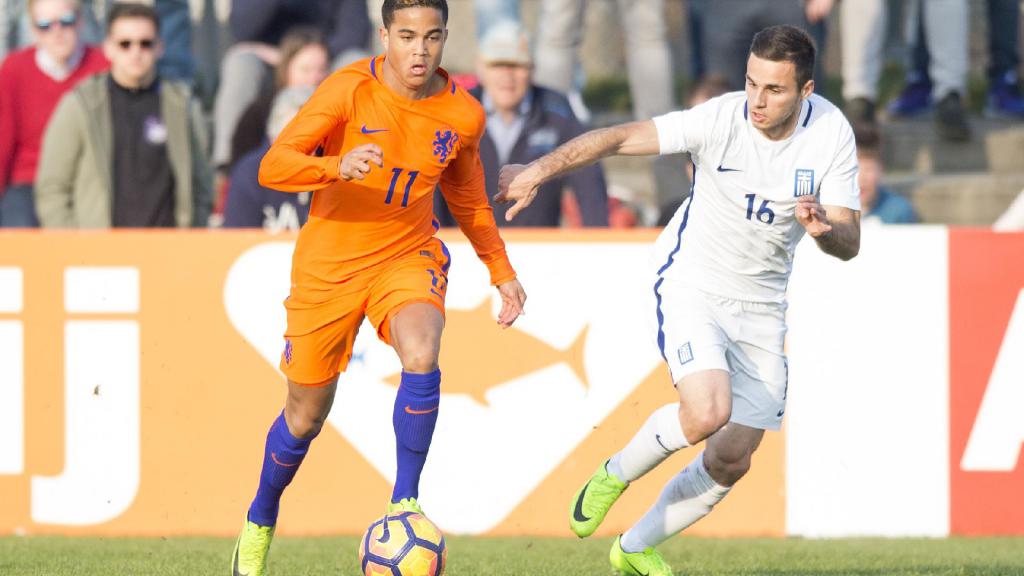The recent performances of the Oranje have evoked some real nostalgia amongst Dutch supporters, with many claiming the Dutch victories over Germany and defending World Cup champions France to be the best performances from their side in years. While their final game in the group stage of the Nations League started off poorly, with the Dutch going down 2-0 within 25 minutes to the Germans, the Oranje demonstrated true resolve to battle back and score twice in the final ten minutes to end in a draw, which secured them top of their group ahead of France.
What is it about this iteration of the Oranje that makes them special? The combination of youth, potential, and tactics means that the Dutch could well be posed for another lengthy spell as one of Europe’s most dominant teams.
Recently, the Dutch national team has followed a boom-bust cycle. After making the World Cup final in 2010, the Netherlands proceeded to get eviscerated in the group stage of Euro 2012. They made the semifinals of the 2014 World Cup, only to fail to qualify for Euro 2016, after being summarily outclassed by Iceland, the Czech Republic, and Turkey. The Oranje similarly failed to qualify for the most recent World Cup, with a devastating loss against Bulgaria (more on that later) costing them a top-two finish in a group which was won by France (with Sweden taking the secondary spot).
However, with the appointment of Ronald Koeman, the fortunes of the Oranje are changing. Koeman has ushered in a new era of Dutch football. Many of the Netherlands’ most prolific players of the previous decade – Wesley Sneijder and Arjen Robben especially – have now retired, leaving Koeman with important vacancies to fill and tactical questions to answer.
So far in the Nations League, however, Koeman has demonstrated a remarkable tactical acuity. Opting to start Memphis Depay as a lone striker, who began his career as a winger, has enabled the Dutch to play an incredibly fluid, possession-based game. The progression of young Ajacied products Matthijs de Ligt and Frenkie de Jong has also proved crucial to this side; de Jong produced back-to-back Man of the Match performances against France and Germany while the partnership of Virgil van Dijk and Matthijs de Ligt could be one of the most dominant pairings for a decade to come.

That being said, this Dutch side does have its limitations. With no traditional striker, the Oranje have struggled to score goals off of crosses, with their goals against Germany and France coming off of set-pieces and counter-attacks. While the Dutch did manage to out-possess the French 62 percent to 38 percent, a traditional striker in the vein of Germany’s Timo Werner or France’s Olivier Giroud would enable Depay and Quincy Promes to use their pace to stretch the field on the wings, rather than through the center of the pitch. Memphis was particularly exposed in the first half against Germany, where the powerful centerback trio of Mats Hummels, Antonio Rudiger, and Nicklas Süle prevented the Dutchman from establishing himself around the edge of the box. When Luuk de Jong, a more traditional center-forward, was brought on, his hold-up play enabled more runs to be made by the various Dutch attackers.
Additionally, the depth of the squad has yet to truly be tested. Promising youth like Donny van de Beek and Javairo Dilrosun are not yet proven on the international stage (the same can be said for PSV youngsters Pablo Rosario and Steven Bergwijn, as well as Brugge striker Arnaut Groeneveld, amongst others).

For their shortcomings, though, the KNVB has a very strong youth system. Roma wonderkid Justin Kluivert is still playing for the U21 side, despite being capped at the senior level. The Ajax, Feyenoord, and PSV academies produce plenty of talent, in addition to the talent those top clubs poach from smaller Dutch sides. Tahith Chong, Daishawn Redan, and the aforementioned Dilrosun are the latest examples of Dutch youth who have gone abroad to continue their development. Koeman will likely use upcoming friendlies as an opportunity to introduce some of his younger talent, as well as to tinker with his tactical approach. Just as Gareth Southgate and Didier Deschamps have done with England and France respectively, Koeman has a real chance to start building a squad comprised primarily of young, capable players. Indeed, of these past call-ups, only four players are aged 28 or older. Denzel Dumfries, as well as the aforementioned de Ligt and de Jong, will anchor the back line and midfield for years to come. Koeman has a chance to instil the next great generation of Dutch players, as well as to build a squad to compete for the World Cup again.
Comparing this Oranje team to their great predecessors is like comparing apples to, well, Oranjes. When Virgil van Dijk, a center-back, volleyed in the goal to send the Oranje to the finals of the Nations League, Johan Cruyff smiled in his grave. Perhaps this Dutch team will demonstrate a more nuanced Total Football – a fluid, possession-based game that will lead the Dutch to glory.
